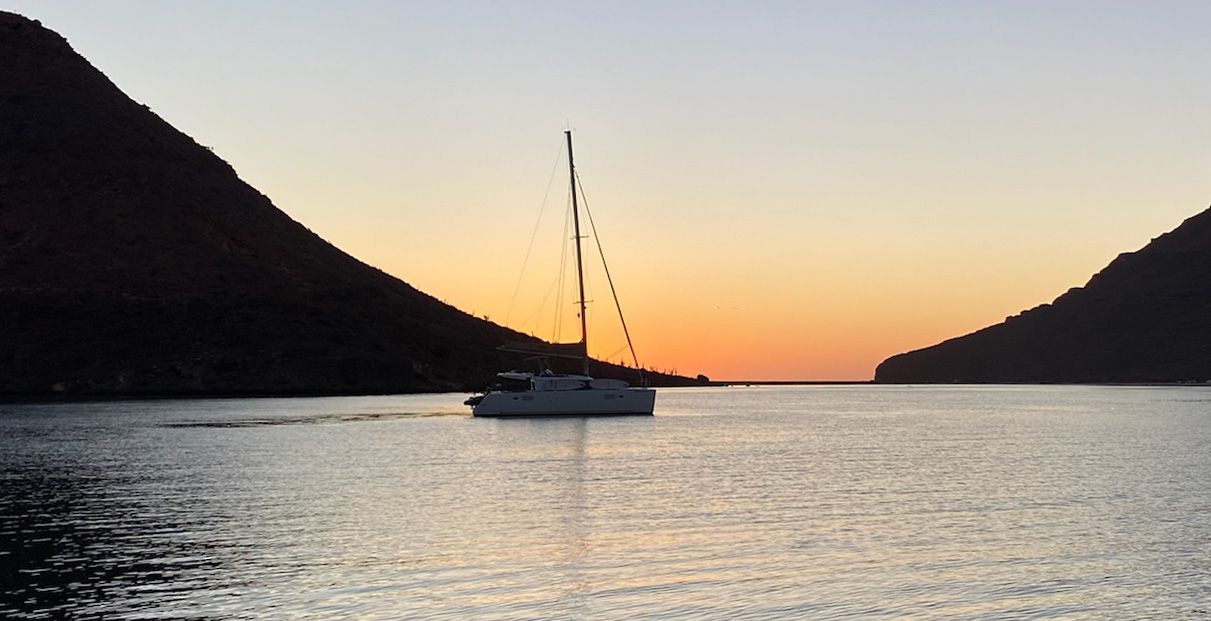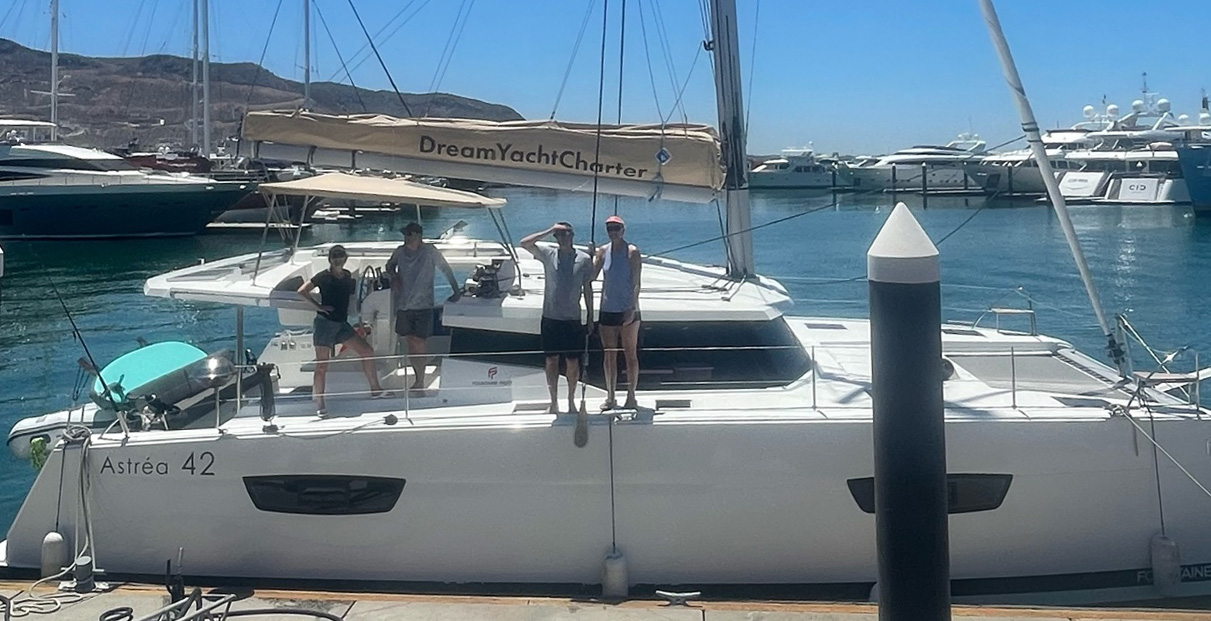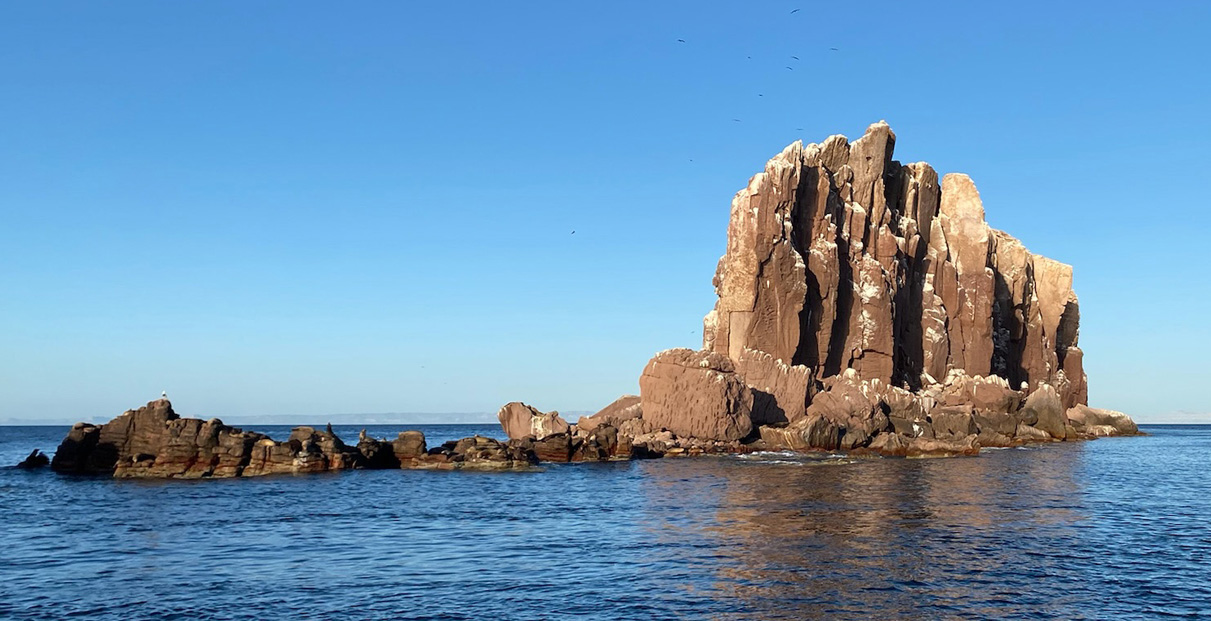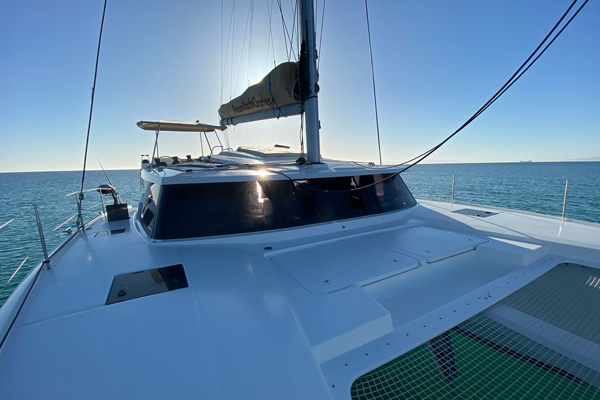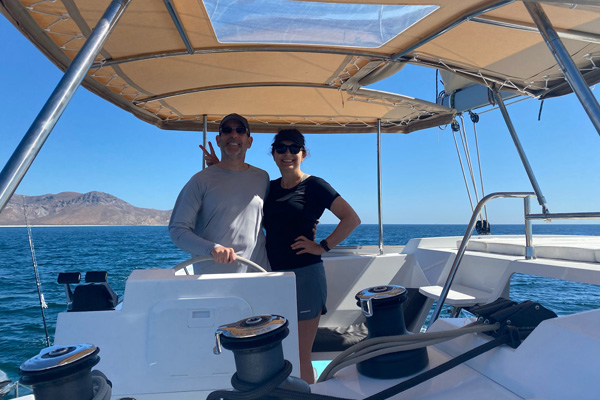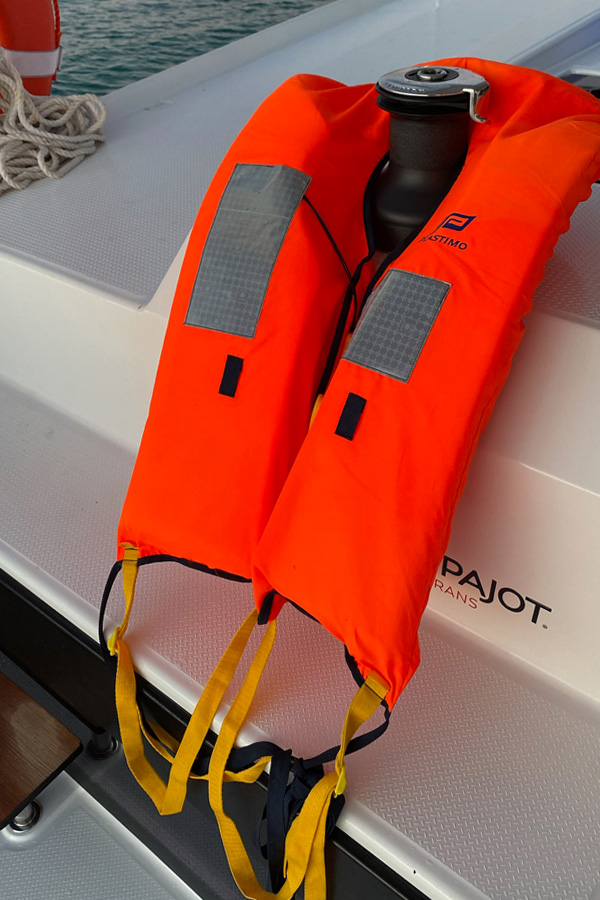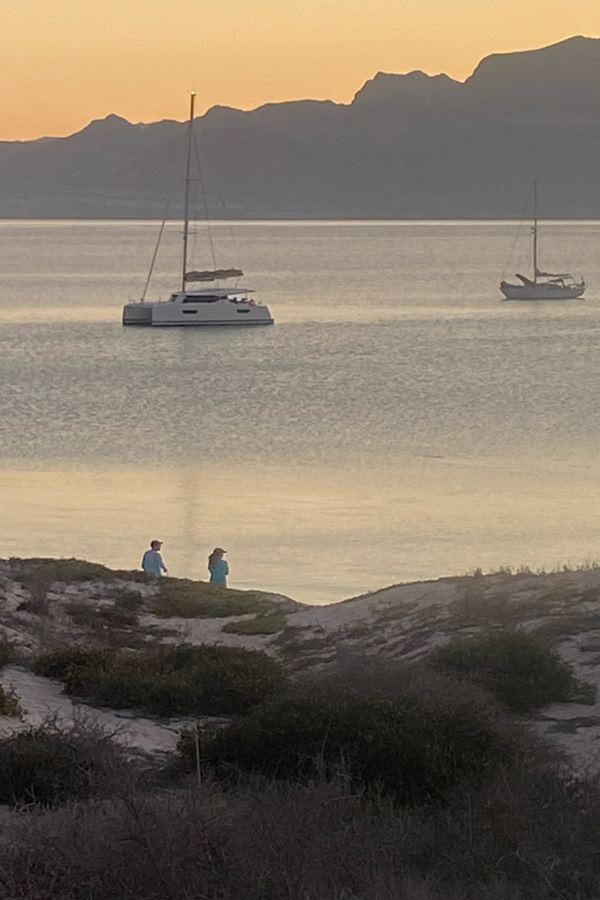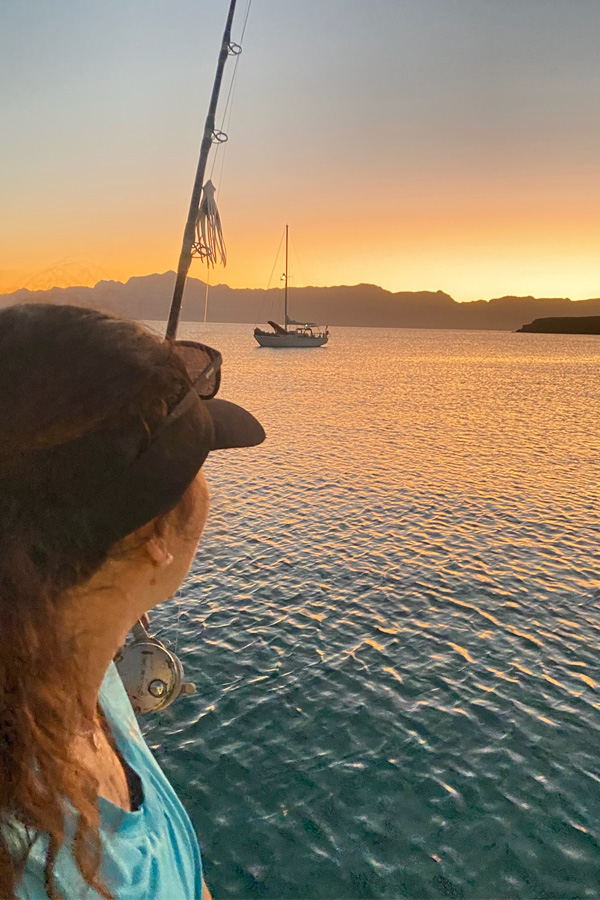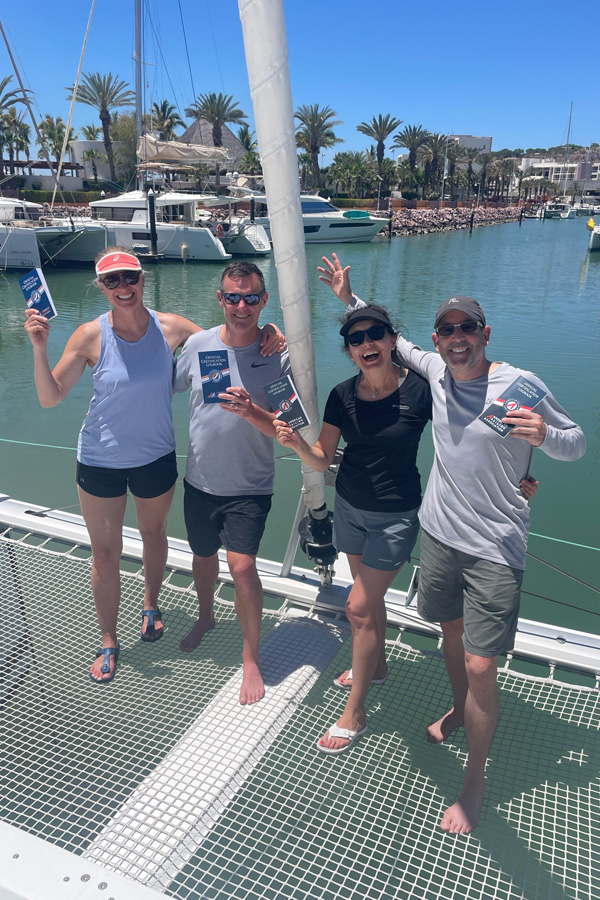August 3, 2022 - Comments Off on Reading The Waves
Reading The Waves
Learning from a master is faster
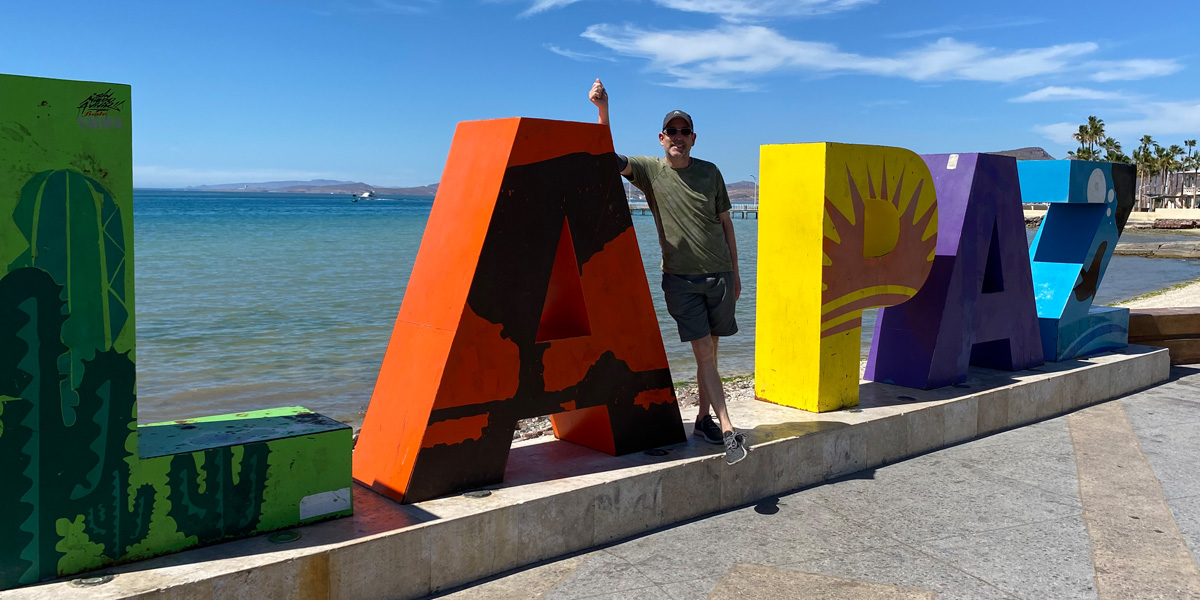
Four thin textbooks arrived in a blue drawstring bag in December, our reading assignment prior to boarding a 42-foot catamaran. In late April, we were to set sail from the port just outside of La Paz, Mexico. Reading one book per month couldn’t be so bad, right? By the time we set foot on the Fountaine Pajot, however, we’d made our way through just one and a half.
Learning the sailing terms was like another language, but without the benefit of a good reference for decoding, like my French gives me clues to understanding Spanish or Italian. There was little other than colloquialisms—it took the wind out of my sails, learning the ropes, he was three sheets to the wind—as hints. I was clueless about clews, goosenecks, halyards, and shrouds. Slogging through the first book twice and quizzing myself until I could earn an honest B was the best I could hope for. It would be easier once I was on the boat, I assured myself.

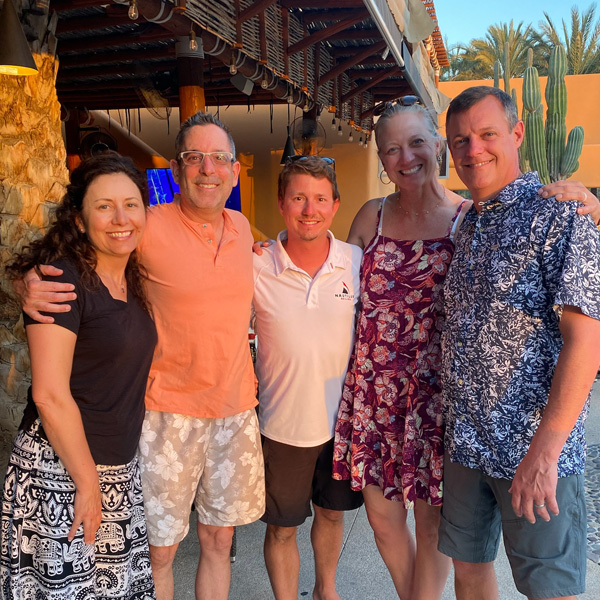
The first step, after meeting our captain Troy Mills of Nautilus Sailing and additional newbie crew, was to learn about the boat’s features and functions—opening lockers, inventorying cushions, locating fire extinguishers, and counting personal flotation devices (PFDs). We learned about provisioning, the heads (and their touchy waste system), navigation devices, desalination tanks, and engines. The purpose of the first lesson was to know the boat, but also to accept that each of us would depend on the combined knowledge and actions of the captain and entire crew on this journey. Our craft was white, sleek, and stable, and would carry us out to sea without any communication from the outside world. Sheer bliss.
“Each of us would depend on the combined knowledge and actions of the captain and entire crew”
Sea Life
We slept aboard and floated off the dock the next morning with green buoys drifting by. Our six night live-aboard adventure to learn and earn our captain certifications was underway. Two young humpback whales—one flashing its tail, the other keeping a low, sleek profile—escorted us into the Sea of Cortez, “the world’s aquarium.” The waves were soft and sea turtles the size of manhole covers floated alongside us. A pod of partying dolphins met us as we rounded a small island, swimming fast along our twin-hulls and surfacing in graceful arches.
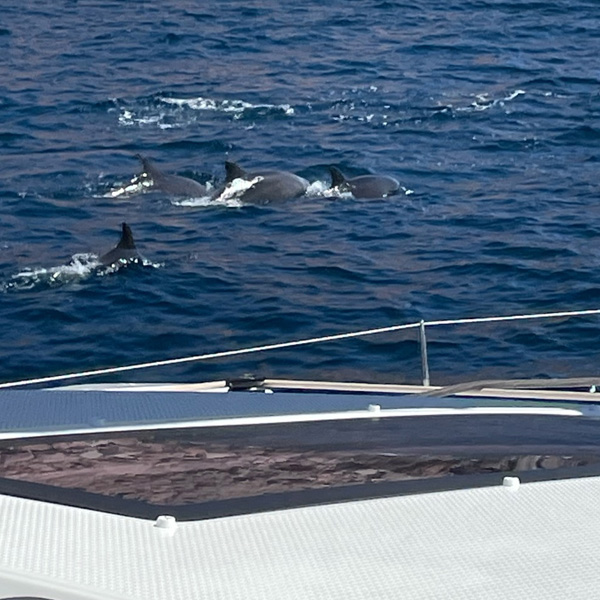
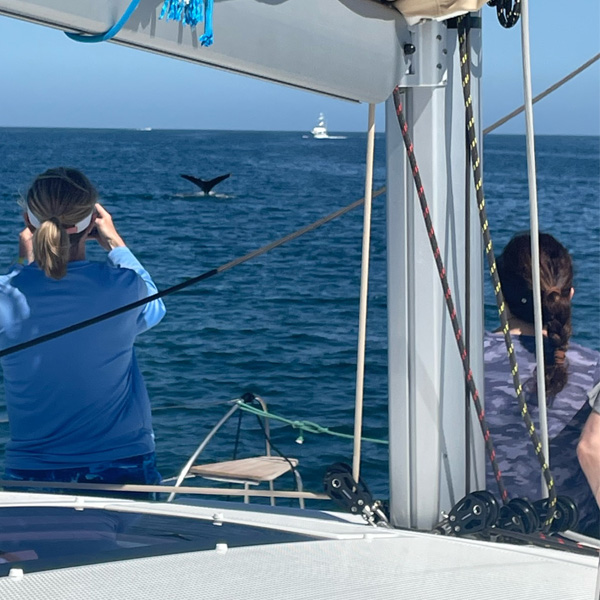
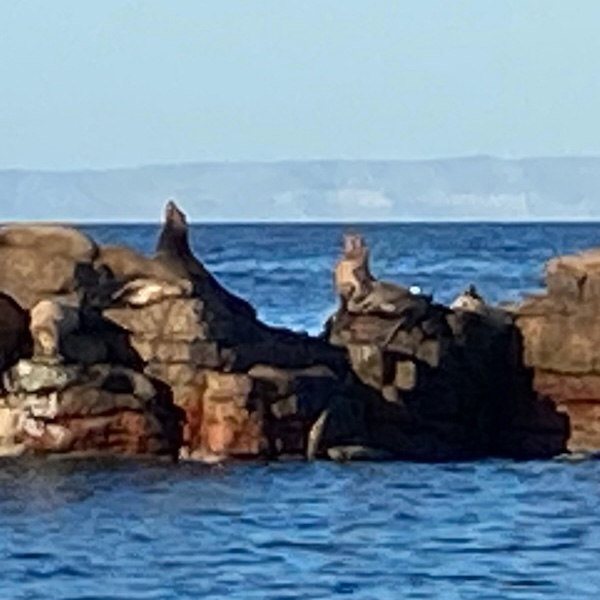
With nightfall came more lessons: How the right anchorage site could shelter us from shifting winds and surf so we could sleep without the risk of heavy rocking or swinging into another boat. Captain Troy could see things we couldn’t. Given his years of experience, he could quickly calculate how rough a sea we were likely to encounter by reading the waves’ amplitude and direction and feeling the wind on his face. He explained how to account for the tides with our timing on and off anchor. Why the boat was built with redundancies—from dual engines to anchor lights and alarms—to prevent a pan-pan or mayday call. How to troubleshoot using an if this, then perhaps this metric. How clear communication among the captain and crew supports good decision-making.
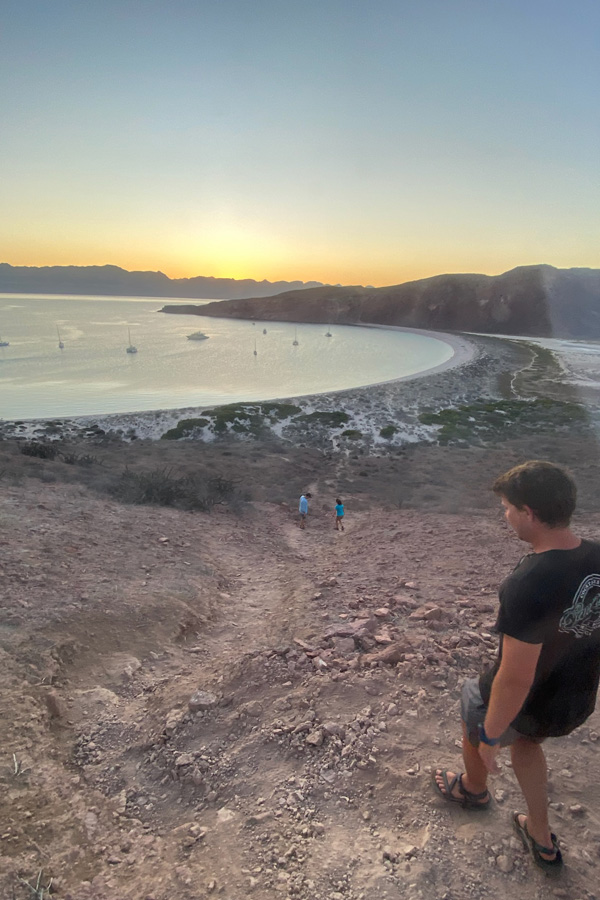
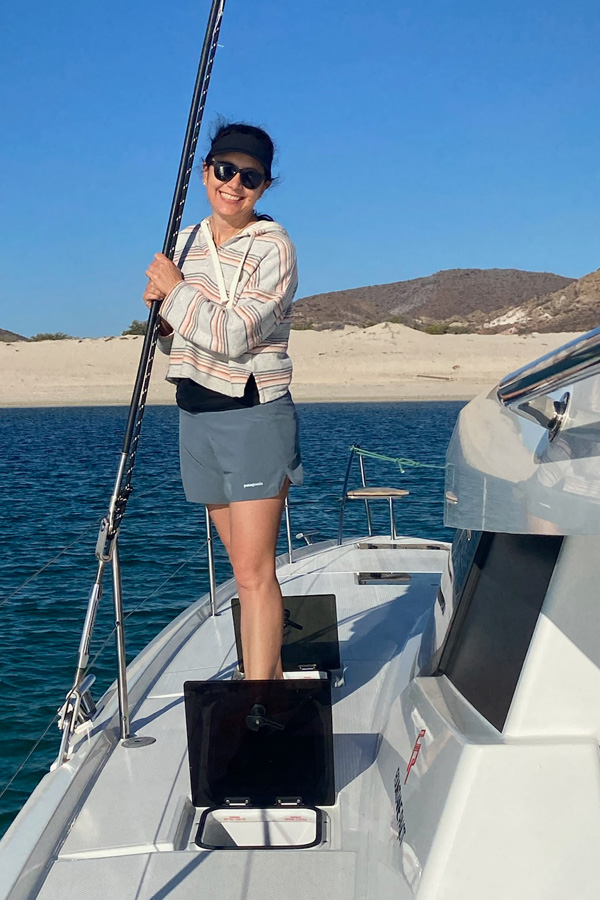
We learned pragmatic rules to sail by and sayings with deeper purpose, including Captain Troy Mill’s salty favorite “A boat shrinks an inch per day,” a nice way of saying keep your stuff stowed or your shipmates will want to deposit you on one of the five uninhabited islands on our journey. Everything in its place can truly prove lifesaving should the weather turn abruptly—tools stored, sheets flaked, and phones far away from a wet sink. When sailing, thinking through everything that could possibly happen and taking preemptive action prior is key. After the first day, it became clear that this week of lessons was just the beginning and there was a lifetime of learning to become an accomplished sailor. As the sun set on our first night at sea, eagle rays leaped along the pink horizon and pelicans settled into our inlet as night patrol. Fair winds and following seas. —Helen
Continue reading: Permission to come aboard?
- Photos by captain and crew of the journey, Helen, Karl, Troy, Rachel and David.
Join my mailing list to receive monthly reads about adventures, design, marketing, and leadership, and how they all relate to and inform one another.

